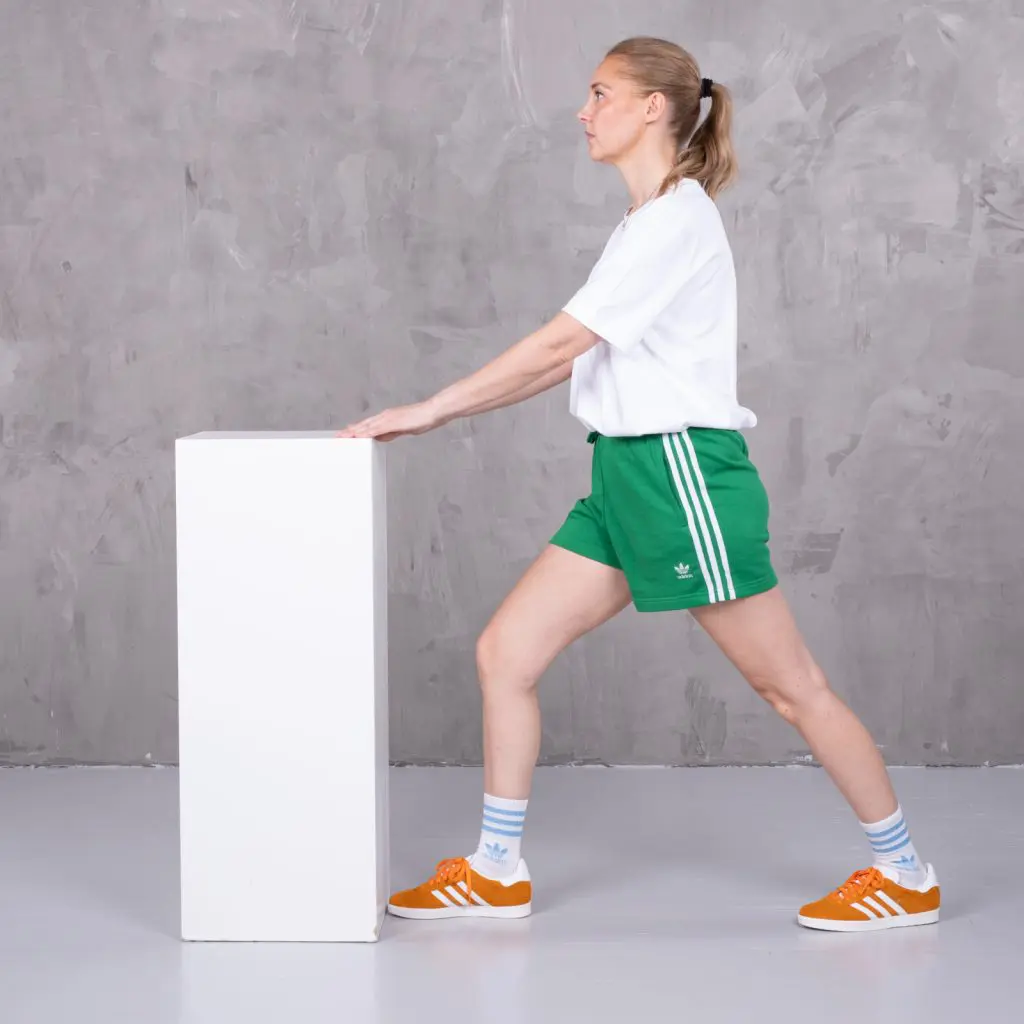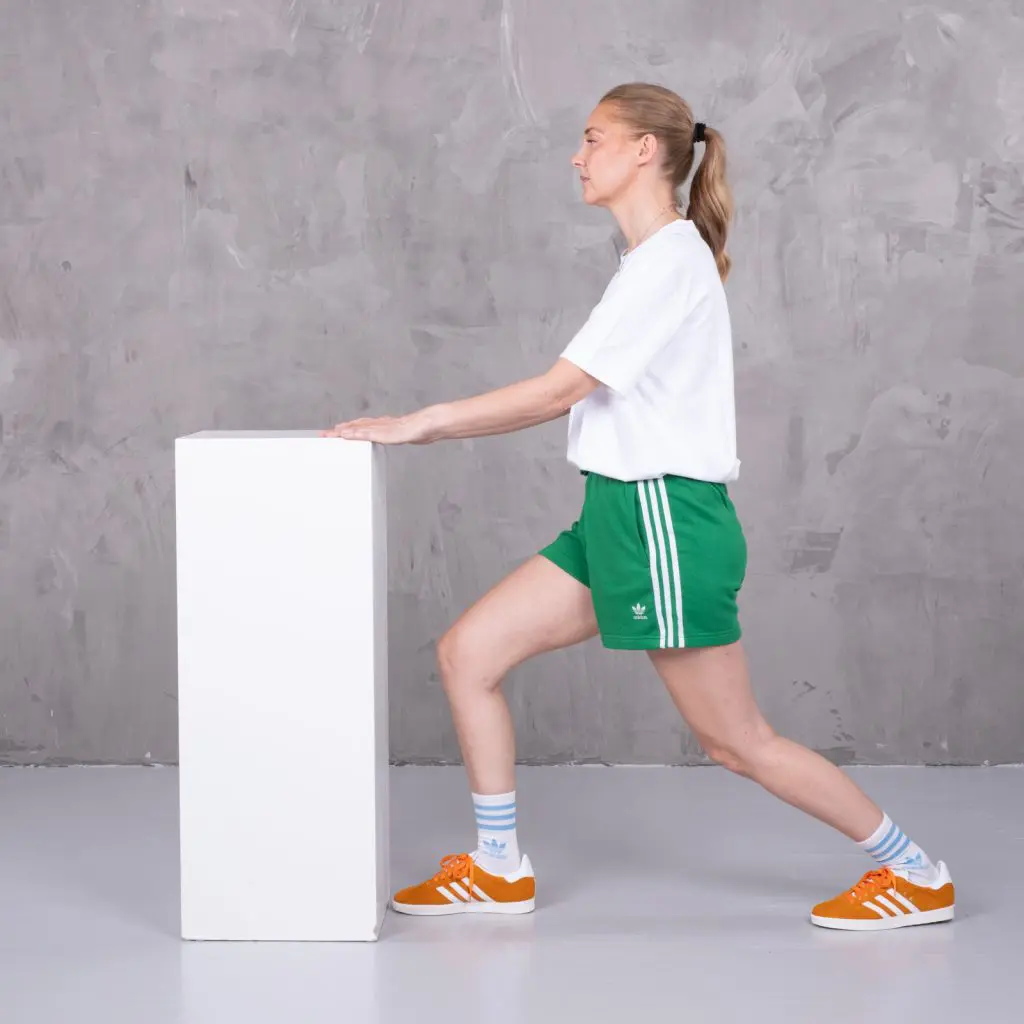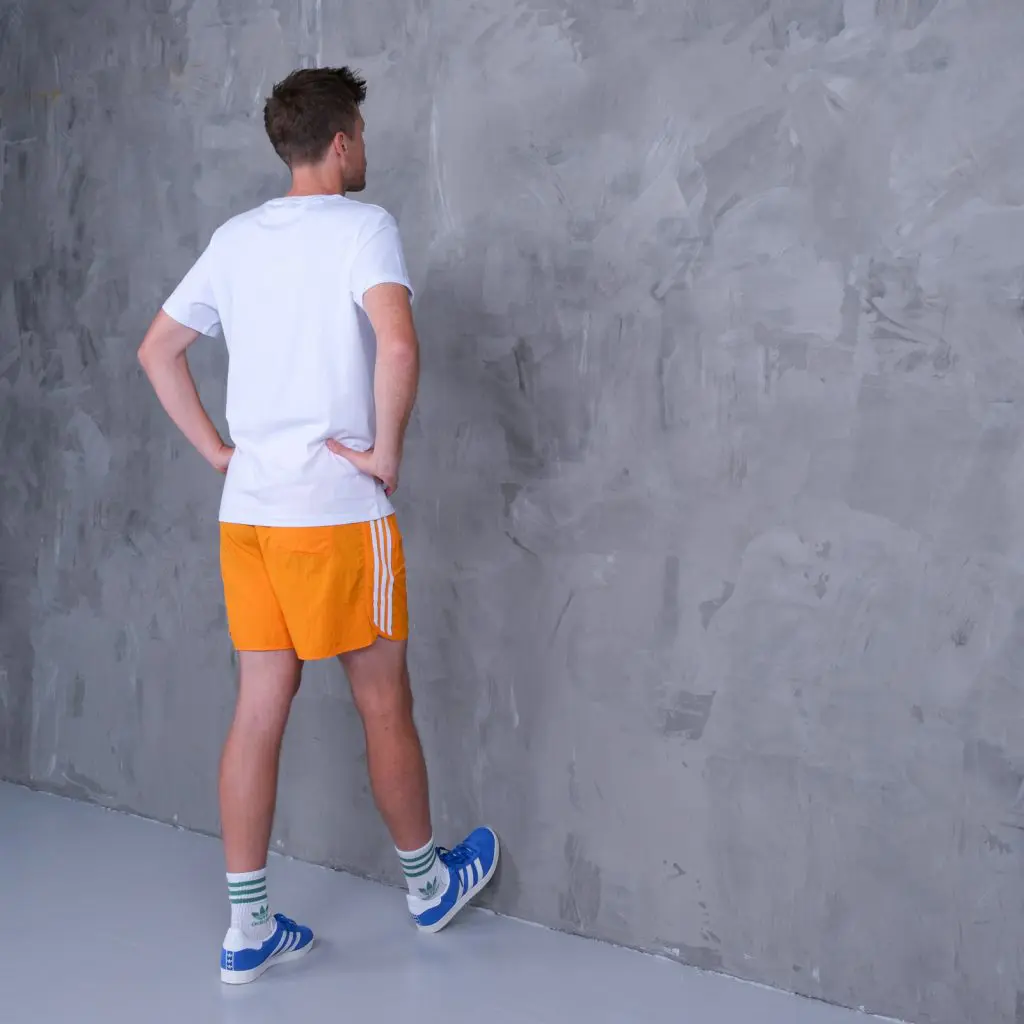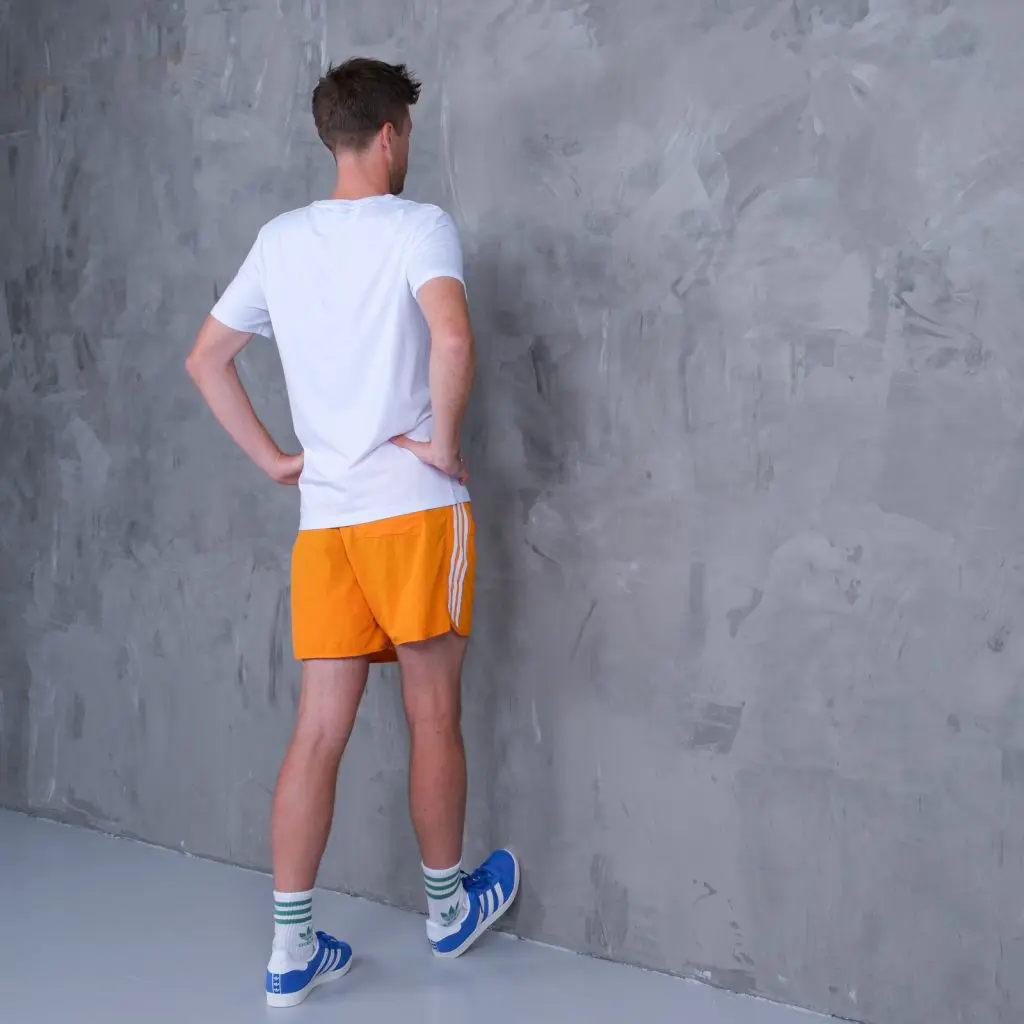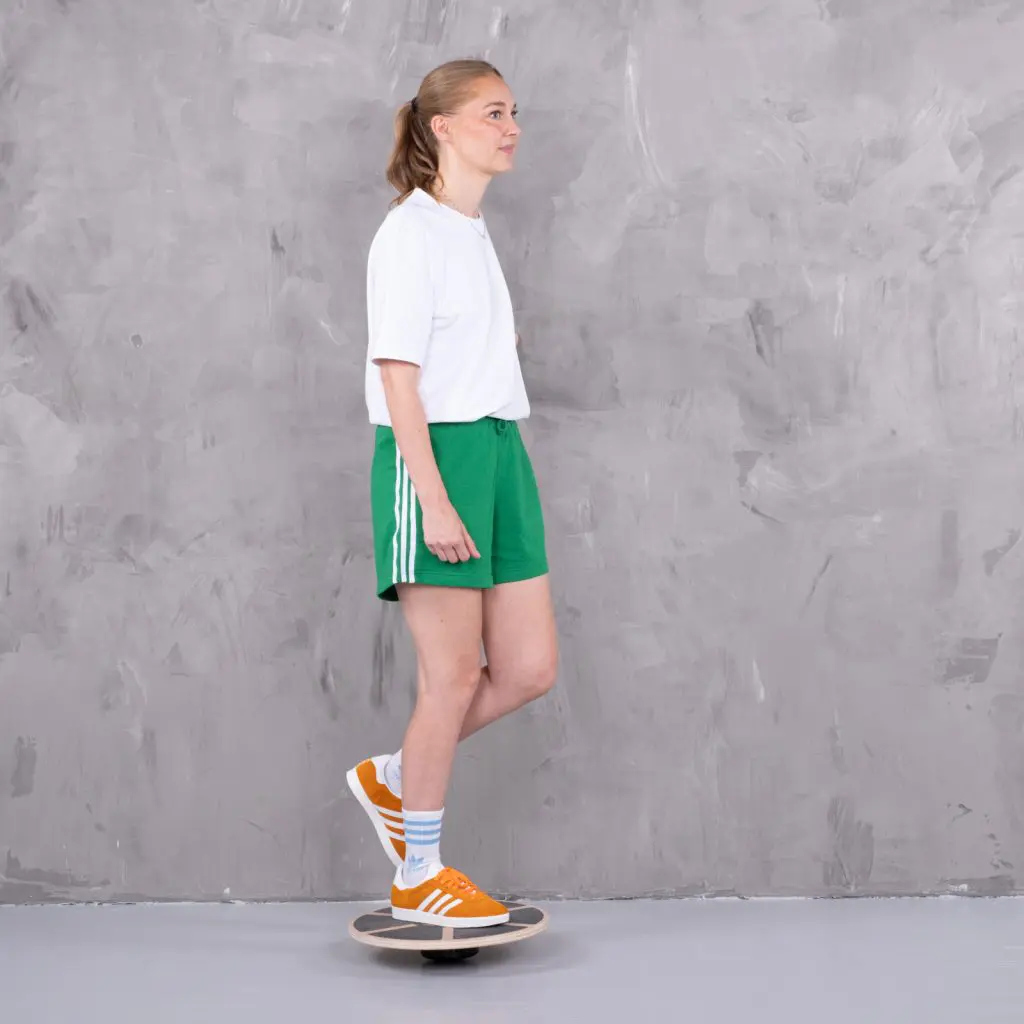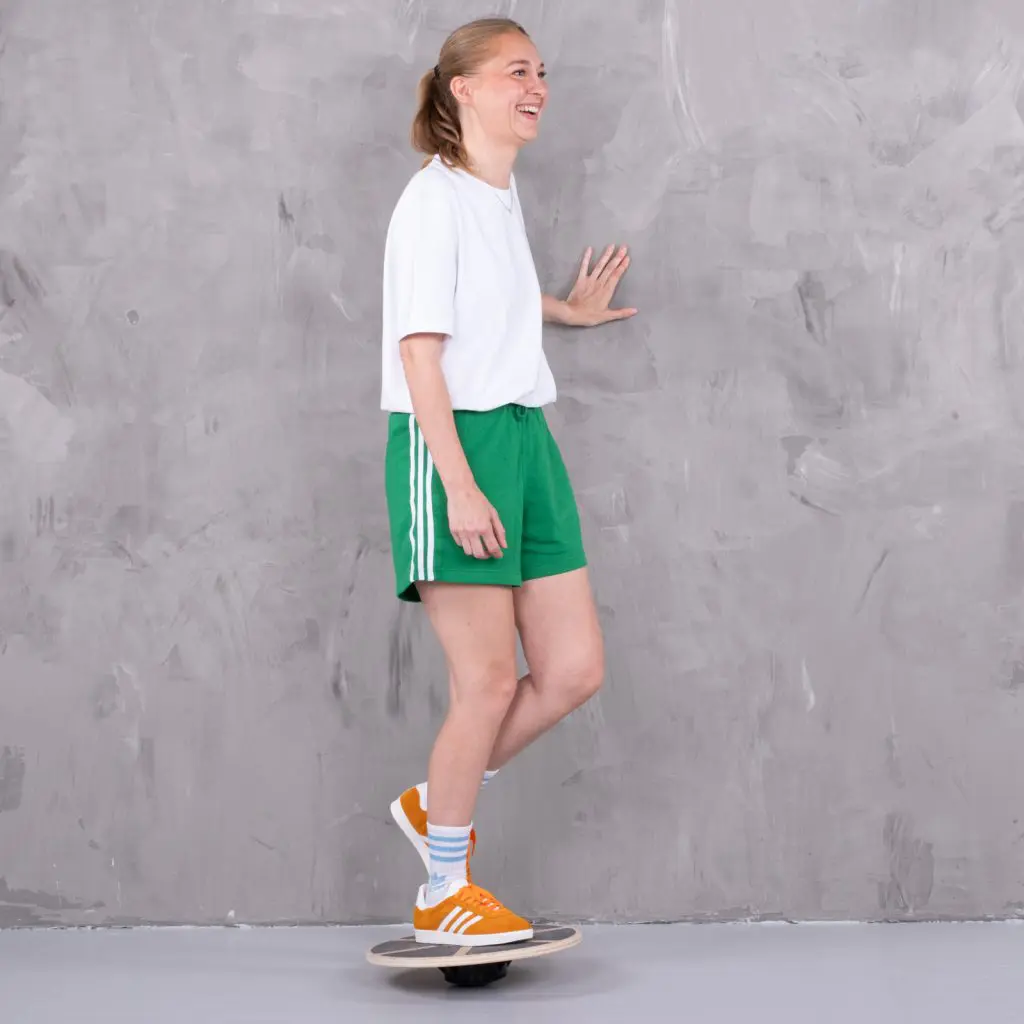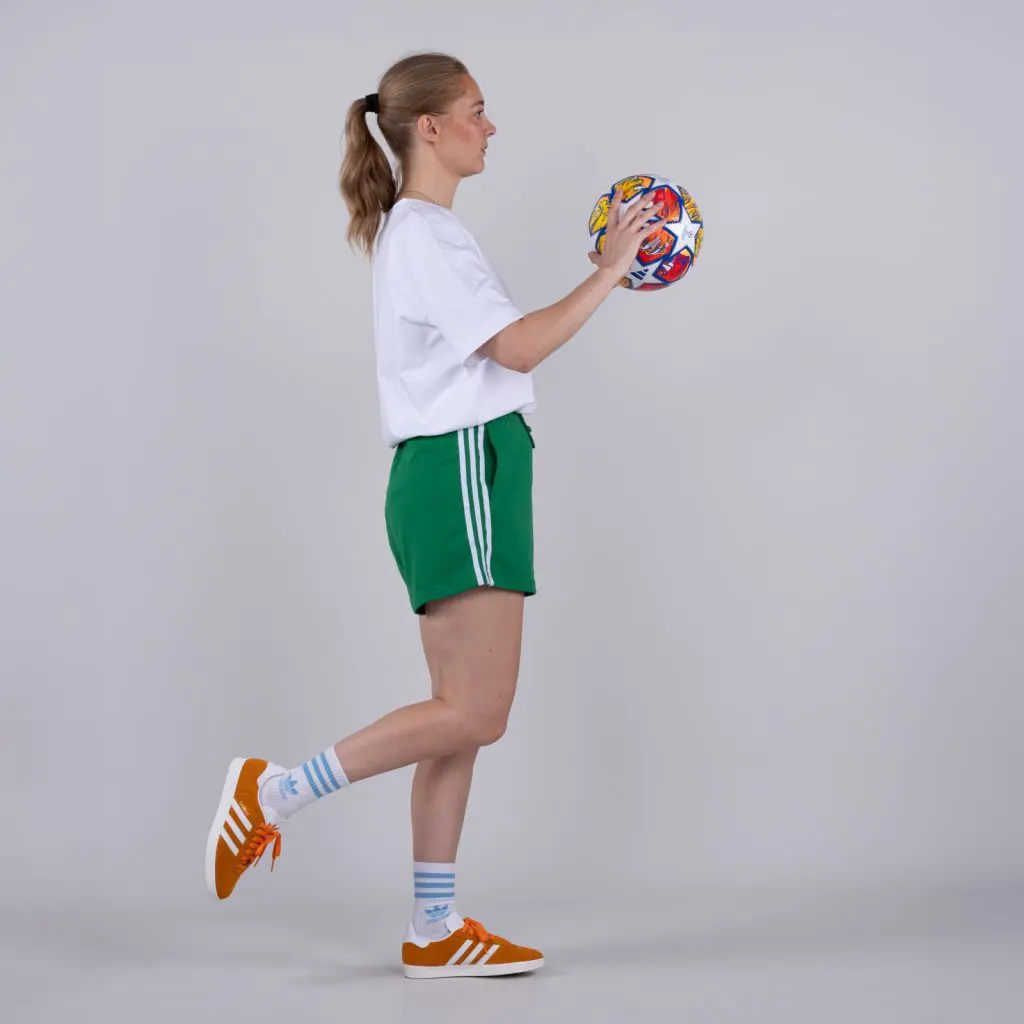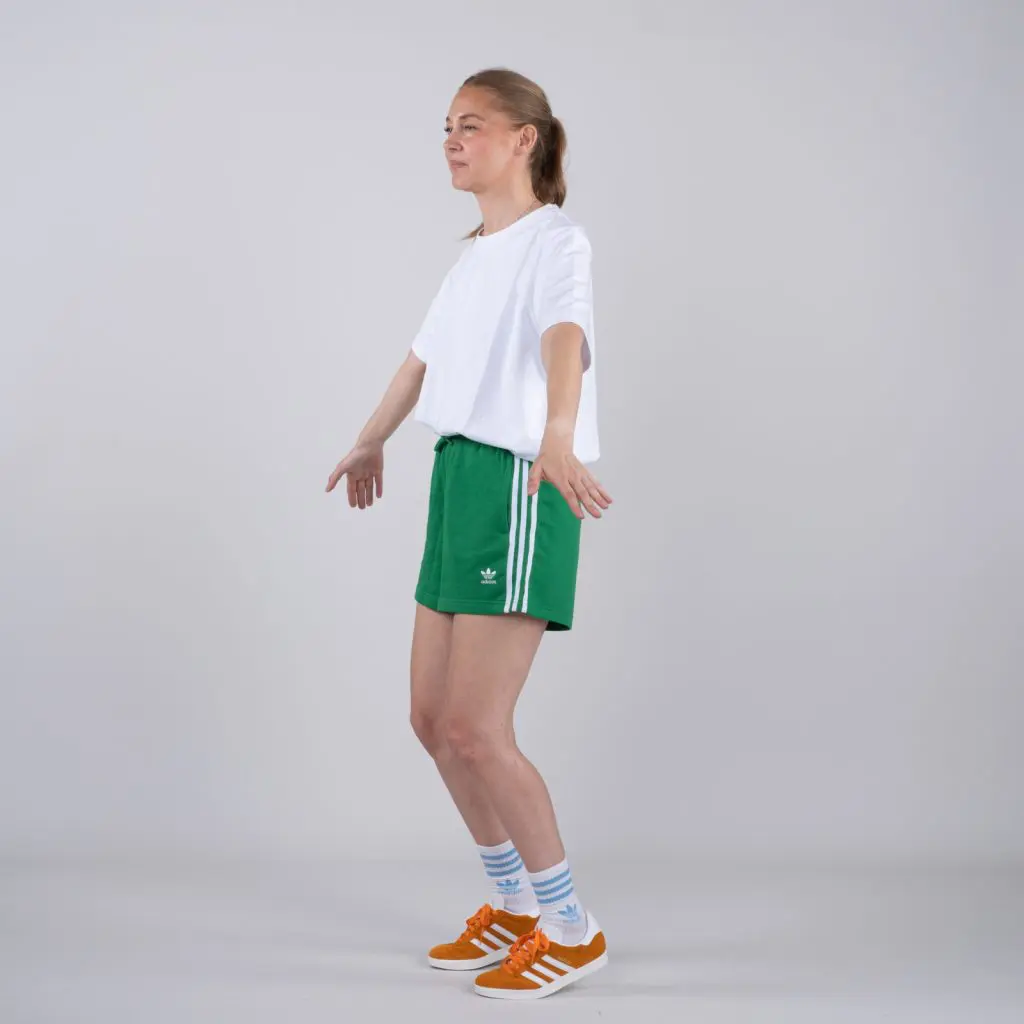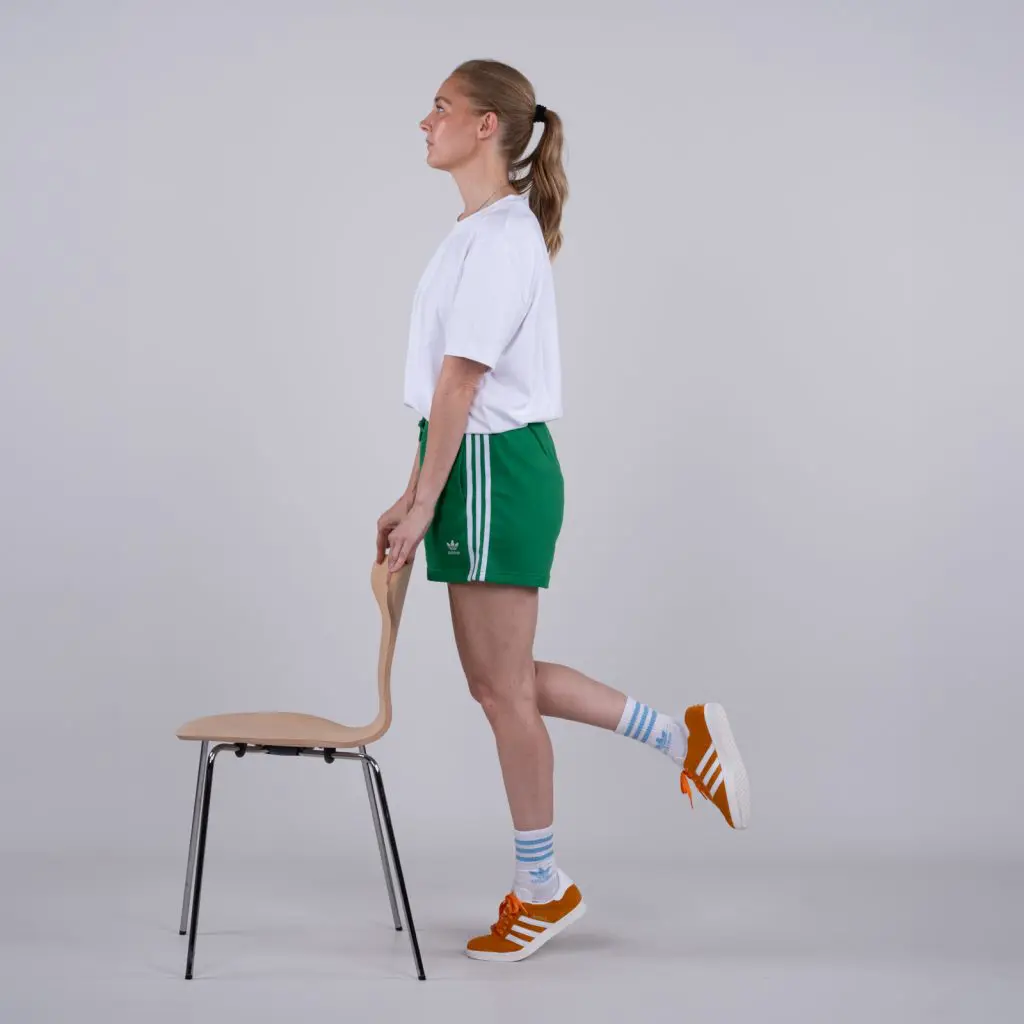This rehabilitation guide for Achilles tendon pain has been developed in collaboration with Rikke Høffner, Postdoc, Sports Physiotherapist, Department of Sports Medicine, Bispebjerg Hospital.
Condition
Unlimited: Cycling, swimming, light jogging on soft surfaces
Stretching
15 minutes of each training session
Coordination
5 minutes of each training session
Strength
40 minutes of each training session
Stand with both front feet on the floor. Slowly stand up on your toes with your weight on your healthy leg. Slowly lower yourself down onto the training leg. Use the healthy leg to get back up on your toes. Perform the exercise alternately with the knee stretched and bent. Gradually decrease the number of repetitions with more resistance by putting on a backpack and gradually increase the load in the backpack.
Stand behind a chair and support with your hands on the backrest. Slowly go up on tiptoe on the affected foot. Hold the tension for a few seconds. Go back down again. The load can be increased by putting on a backpack and gradually increasing the load in the backpack. Gradually do fewer repetitions with more resistance by putting on a backpack and gradually increasing the ballast in the backpack.
Stand with knees slightly bent and forefoot on the floor. Go up on your toes, but maintain the bend in your knees. Hold the tension for a few seconds. Slowly return to the starting position. Gradually do fewer repetitions with more resistance by putting on a backpack and gradually increasing the ballast in the backpack.
Stand with the elastic band around both ankles. Stand on one leg with hip, knee and foot aligned. Keep your upper body straight. Bring the other leg diagonally backwards/to the side. Hold the tension for a few seconds. Slowly bring the leg back without putting it on the ground while maintaining tension in the elastic band.

